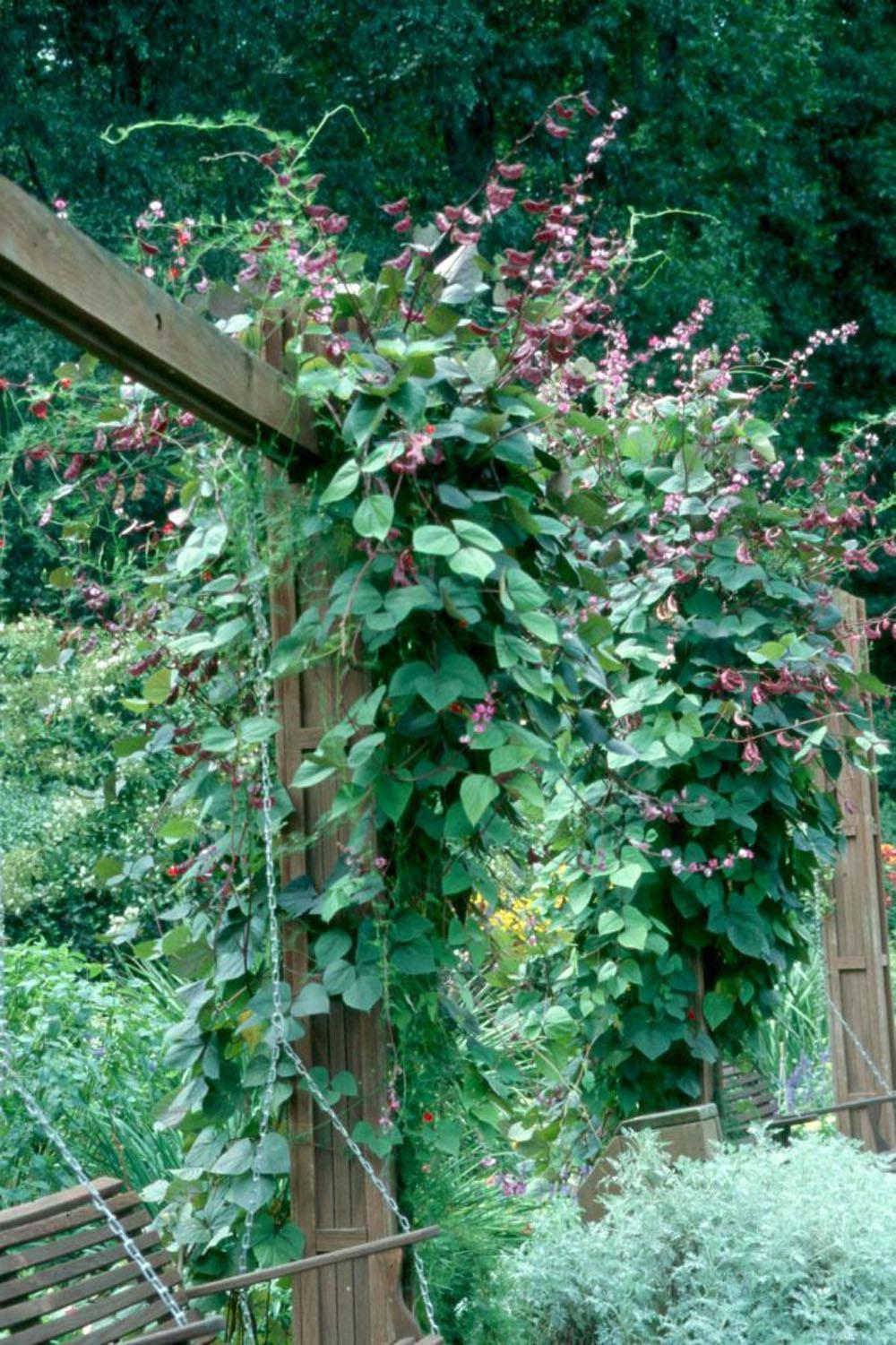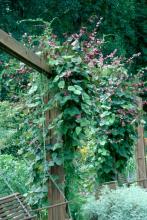Information Possibly Outdated
The information presented on this page was originally released on July 15, 2004. It may not be outdated, but please search our site for more current information. If you plan to quote or reference this information in a publication, please check with the Extension specialist or author before proceeding.
Bean adds tropical flair to gardens
By Norman Winter
MSU Horticulturist
Central Mississippi Research & Extension Center
The hyacinth bean is one of those vines that, once it starts growing in the fall, everyone wishes they had planted. If you don't want to be left out, get yours started quickly.
The hyacinth bean was a favorite of Thomas Jefferson, and you also will love it once you start growing it. This heirloom, also known as Egyptian Bean, Indian Bean and Bonavist, originates in tropical Africa and once had the botanical name Dolichos lablab. The name now in favor is Lablab purureus.
Even though we grow it as an annual, rest assured it is a quick-covering vine that produces fragrant, lilac-purple and white flowers in copious quantities. The fruit pods that follow are an equally attractive feature of the vine. In fact, Purdue University has researched harvesting the stems and pods as cut flowers.
The hyacinth bean is an environmentally friendly vine to grow with low insect and disease pressures. With its high-powered vigor, anyone can grow it. If you have been to the Fall Flower and Garden Fest in Crystal Springs, you know this is the plant that always covers the tunnel children love to run through.
There's a good chance you'll find hyacinth bean plants for sale, but if not, the seeds are fairly easy to find in seed racks. Once you start growing yours, you will be able to harvest seeds to use for years to come.
For best results, select a site in full sun with fertile, organic-rich soil. If drainage is less than perfect, amend the planting site by working in 3 to 4 inches of compost or humus.
While preparing the soil, consider incorporating 2 pounds of a 5-10-5 fertilizer per 100 square feet of bed space. Plant the seed adjacent to a sturdy support structure for climbing such as a fence, trellis or pergola.
Plant the seed 1 inch deep and cover. Water thoroughly and apply mulch. The seeds should germinate in 10 to 14 days. Space group 4 seedlings at intervals 36 inches apart if planting along a fence.
The hyacinth bean will grow a long time before reaching maturity. Feed every four to six weeks with a light application of a slow-release fertilizer like a 12-6-6. Keep well-watered during the growing season.
On the Coast, they have been known to return occasionally, giving a perennial performance. An extra layer of mulch will give added winter protection.
The seedpods are edible and considered a staple in Indian and Asian foods markets. The dried beans are nutritious, but the pods have an unpleasant odor. Find out the correct method of processing before cooking.
The hyacinth bean makes a great companion for other late-summer and fall blooming plants like salvias, mums and marigolds. I have seen handsome plantings with the grey-leafed Powis Castle artemisia.
This is an all-purpose vine from the standpoint of design. It works well in a cottage, perennial or tropical garden. I've heard tales of a variety called Giganteus that has large, white flowers, but finding this one will take some searching. Enjoy whatever hyacinth bean variety you find -- it's a great vine.



